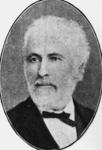The South African Connection. Sir George Grey and Dr. John FitzGerald.

Recently I've felt quite close to history. We have had some exciting visitors from across the Tasman! An historian in NZ traced descendants of Thomas FitzGerald who built this house, to Australia, and three great grand daughters were invited to visit us here. Fitzgerald was an amazing man who at 19 years old came from Ireland to survey land in NZ. He led a party up the Tukituki River to this area and set up trading stores and built this house and later several others. Many of the historic places in Napier such as the Catholic church were built by him. He became the first superintendent of Hawke's Bay in1859 to 61. Then he and his family went to Australia where he pioneered the sugar industry and founded the town of Innisfeil and surveyed McKay and laid out the streets giving them the same names as found in Napier.
We cleaned and smartened up the house. Keith mowed and trimmed the lawns and Elaine and I did the flower pots and outdoor table, which we could not use as it rained! Instead we sat round the big dining room table for a cream scone afternoon tea and talked and drank pots of tea. What delightful people they were. Living in this house has certainly given us an interesting life style that we would not have had anywhere else.
Thomas Fitzgerald and Sir George Grey became great friends while Sir George was on his first tour of NZ as Governor. Grey served as Governor of New Zealand twice. First from 1845 to 1853. and then again from 1861 to 1868. He was arguably the most influential figure during the European settlement of New Zealand during much of the 19th century. He was also prime minister of New Zealand for two years. Grey was Governor of the Cape Colony from 5 December 1854 to 15 August 1861. It was Governor Grey that persuaded the third owner of the Pines Dr Todd to take up the position of medical superintendent for this area. Sir George Grey was also a great friend of Thomas FitzGerald's brother Dr.John FitzgGerald who was his Medical Advisor and when he went to South Africa in 1854 as Governor he invited John FitzGerald to be his Medical Advisor there and to build a hospital at King Williamstown. This hospital became Grey Hospital ..
Grey was the moving force behind the creation of proper hospital facilities for the Xhosa population for the Ciskei and further afield. Gray's first step was to appoint FitzGerald as Superintendent of Native Hospitals. FitzGerald opened the forerunner of Grey Hospital on 28 April 1856 in 18 cottages in the Pensioners village in King Williams Town. During this phase the Superintendent played a major role in relieving the suffering during the cattle killing mania in which an estimated 50000 Xhosa eventually perished. He and Grey were also largely responsible for the erection of the native Hospital which was designed by Woodford Pilkton. The imposing building cost over 16000 pounds and was opened on the 14 June 1859. As a fitting tribute to Sir George Grey, the building was officially named Grey hospital in 1887. This declared monument is today the oldest and best known institution in King William's town and is still in use as a hospital.'
A sixteen year old girl, Nongqawuse, had a vision on the banks of the Gxarha River. She saw the departed ancestors who told her that if people would but kill all their cattle, the dead would arise from the ashes and all the whites would be swept into the sea. The message was relayed to the Xhosa nation by her uncle, Mhalakaza. Although deeply divided over what to do, the Xhosa began killing their cattle in February 1856. They destroyed all their food and did not sow crops for the future. Stored grain was thrown away. No further work was to be done. Days passed and nights fell. The resurrection of the Xhosa dead warriors never took place.
In his book The Dead Will Arise, historian J.B. Peires contends that by May 1857, 400,000 cattle had been slaughtered and 40,000 Xhosa had died of starvation. At least another 40,000 had left their homes in search of food. According to Dr. John Fitzgerald, founder of the Native Hospital who witnessed the events, one could see thousands of those "emaciated living skeletons passing from house to house" in places such as King Williams Town. Craving for food, they subsisted on nothing "but roots and the bark of the mimosa, the smell of which appeared to issue from every part of their body."
As the whole land was surrounded by the smell of death, Xhosa independence and self-rule had effectively ended.'
Well I have good reason to believe that Sir George Grey visited Dr. Todd here in this house after he arrived back for a second tour of duty as Governor beginning in 1861. Waipawa was the only centre of significance between Wellington and Napier and it would have been a good place to stop off on the long journey. After all it was right on the main track just after the river crossing at Abbotsford, as Waipawa was then known as.
His memory lives on in South African names, Grey's Hospital PMB. Greytown, Greyton, Grey High School in PE Grey College in Bloem. and and of course Lady Grey. . In New Zealand, Greytown, Grey River. Greymouth and suburb of Grey Lynn in Auckland.






0 Comments:
Post a Comment
<< Home